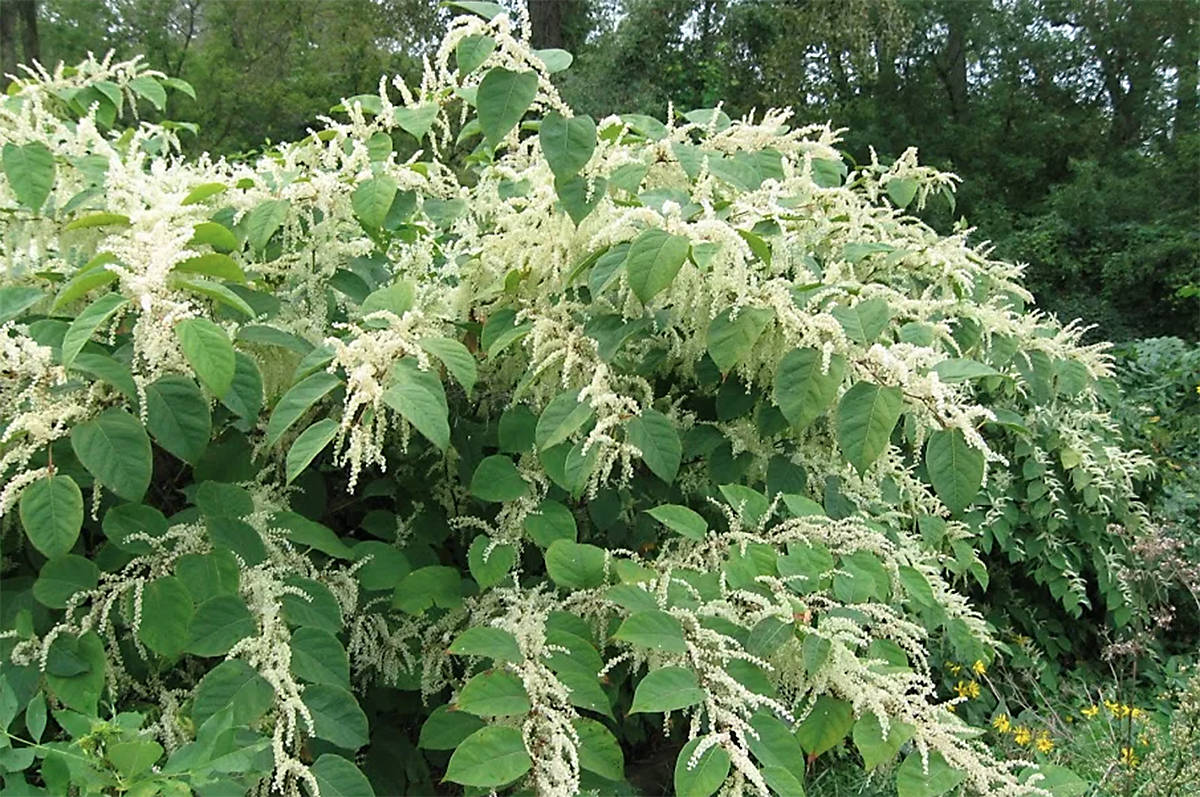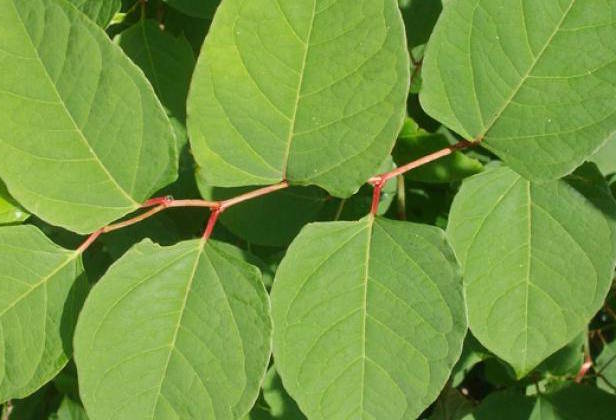Ken Traynor, spokesperson for the Cowichan Lake and River Stewardship Society, told Lake Cowichan council June 18 that the invasive plant, Japanese knotweed, could soon become a concern in Cowichan Lake.
“We’ve been looking at the challenge of Japanese knotweed in the watershed. We’ve been working on developing a program; TimberWest, and now Mosaic has been working on it at Caycuse. They’ve accomplished a lot up there on Nixon Creek and the idea is to bring that work down the watershed over a number of years,” Traynor said.
He noted that there’s a big patch of Japanese knotweed at Lake Cowichan’s own Lakeview Park in the maintenance yard behind a pile of cedar mulch. He wondered if council has a policy about removing such invasives on their property.
”I know the CVRD works with the Coastal Invasive Species Committee. They do a lot of work up in Nanaimo. And if there wasn’t [a policy], we’d be willing to work with you.”
Coun. Carolyne Austin interjected, “Is that the stuff that looks like bamboo? We have a patch near us.”
Traynor said the patch he’s seen is up near Lakeview Park because he likes to hike up there.
“The CVRD now has a program where they will accept the worst species. You have to bag it specially with a gooseneck but they will accept invasive species for incineration.”
“Like broom and that?” asked Austin.
Traynor replied that he didn’t know if broom was on the list of five that they have.
“But they’d be happy to cooperate around that. I know Don Hoare is head of the invasive species committee and he’d be interested.”
Horticultural literature is not kind to this plant, describing it as “ferocious” and “an indestructible scourge”.
According to the Invasive Species Council of BC, there’s quite a bit of knotweed about because it’s been used as a decorative plant in gardens.
Here’s the scoop from their website on these invasives:
“Knotweeds (Polygonum spp.) are invasive perennials, with four species found in British Columbia: Japanese knotweed (Fallopia japonica); Bohemian knotweed (Fallopia x bohemica); Giant knotweed (Fallopia sachalenensis); and Himalayan knotweed (Polygonum polystachyum).
“Knotweeds thrive in roadside ditches, low-lying areas, irrigation canals, and other water drainage systems. They are also found in riparian areas, along stream banks, and in other areas with high soil moisture. Knotweeds occur in the southwest coastal region, as well as elsewhere in the province.
“Knotweeds have small white-green flowers that grow in showy, plume-like, branched clusters along the stem and leaf joints. Hollow stems stand upright and are bamboo-like with reddish-brown speckles and thin, papery sheaths. Leaves are heart or triangular-shaped and stems grow one to five metres in height at maturity, with leaves eight to 10 centimetres wide and 15 centimetres in length. Giant knotweed leaves are generally twice the size of the other three species.
“A distinguishing feature of Japanese knotweed is the zigzag pattern in which leaves are arranged along the plant’s arching stems.
“Knotweeds spread rapidly through root systems that may extend from a parent plant up to 20 metres laterally and up to a depth of three metres. They thrive on freshly disturbed soil in moist locations. Knotweeds are dispersed by human activities or by water to downstream areas, and are of particular concern in riparian areas and areas prone to seasonal high water or flooding. Plants emerge in early spring and produce large leaves that can shade out other plant species. Infestations can dominate stream banks and reduce sight lines along roads, fences, and rights-of-way.”

